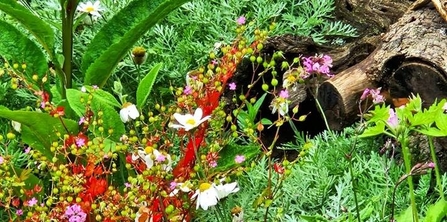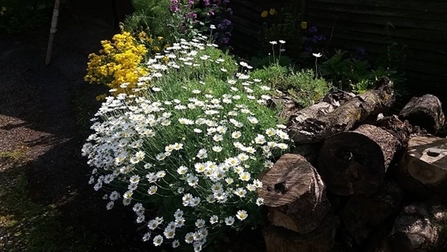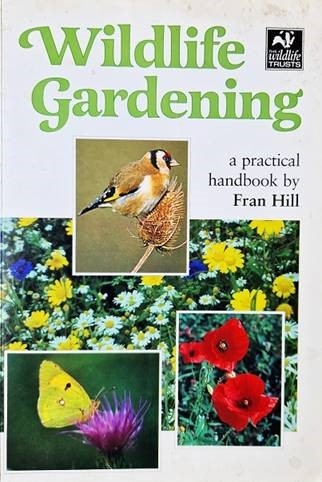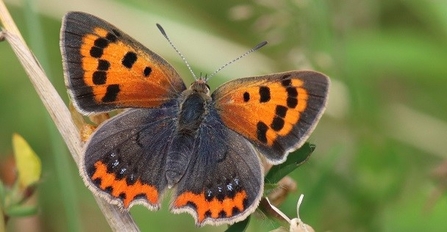Hello again after what has been a very mixed month of weather. At least the plants have benefitted from the rain even if the sun-loving insects have not!
Are you logged in?
Any wildlife garden worth its salt should have at least one log pile.
In my garden there are two and one of them has been there for more than twenty years. Replenished with new logs as the older ones decay, there’s a lot of humus buried within in which provides a great growing medium.
This log pile is now more plant than log as you can see, with all the plants being self-seeded including two fine foxgloves.
Wild Update - May 2024

Part of the log pile - Nick Brown
The dominate plants change each year of their own accord. Ten years ago the log pile looked like this with yellow Alyssum and an abundant variety of a garden daisy.

log pile - Nick Brown
Over the years I’ve found toads, newts and frogs hiding in it, insects like wasp beetles and cramp ball weevils emerging from the logs and many others feeding on the flowers.
Log piles featured in the Trust’s book on wildlife gardening, which I edited back in the 1990s. It sold over 50,000 copies making a tidy profit in the process.

Cover of the second edition
Lesser is more
Any species burdened with the name ‘lesser’ must exist somewhat in the shadow of its ‘greater’ relative. This is particularly true of the lesser stag beetle Dorcus parallelipipedus, a species which inhabits my log piles.

Lesser (but still impressive) stag beetle - Nick Brown
The larger stag beetle species Lucanus cervus doesn’t occur so far north. For sure the males are impressive-looking beasts with their oversized ‘horns’ but I’m still delighted every time I find a lesser.
There be dragons!
The broad bodied chaser dragonfly has become much more common in the county over the last thirty years. It’s a thick set, sturdy insect which breeds in ponds and sometimes turns up at my small garden pond about now. The males have broad powder-blue abdomens while the females are brown with yellow side-spots make them look slightly like a hornet. Obligingly, chasers often perch on bankside vegetation, the males flying off to chase any rivals away but soon returning often to the very same perch!

Vaughn Matthews
Another early species is the hairy dragonfly which has recently colonised Willington Wetlands. As you can see, it is indeed very hairy, quite unlike any of its ‘hawker’ relatives.
Ian Preston
Watch out for a copper
One of our most attractive butterflies is just starting to fly. The small copper lays its eggs on common and sheep’s sorrel and just occasionally on broad leaved dock.

Kevin Morris
